I'm plotting a 3D scatter plot reading my values from a file. Each line of this file has 3 coordinates and a standard deviation. Let's keep the errors aside for the moment.
import os
import numpy as np
import matplotlib.pyplot as plt
input_file = os.path.normpath('C:/Users/sturaroa/Documents/my_file.tsv')
# read data from file
my_data = np.genfromtxt(input_file, delimiter='\t', skiprows=0)
X = my_data[:, 0] # 1st column
Y = my_data[:, 1] # 2nd column
Z = my_data[:, 2] # 3rd column
errors = my_data[:, 3] # 4th column (errors)
# draw 3D scatter graph
fig = plt.figure()
ax = fig.gca(projection='3d')
ax.scatter(X, Y, Z)
I get this

There is a nice example in the gallery that draws a surface and the projection of contours (image below). I need to have a similar representation while elaborating my data as little as possible (to prevent distortions).

I'm aware of this question explaining how to get a 3D surface out of irregular 3D data. However, it "smooths" the curve, and interpolates to a regular set of points. I've read the doc about griddata, it says it returns a
2d float array - Array of values interpolated at (xi, yi) points.
Not what I want. I was told by some people that I absolutely need to interpolate to find a surface. Ant it may be true. I was also told by some other people that interpolation is bad, because it forces a shape. And this is probably also true (for large values of "interpolation").
How can get a decent 3D graph with minimal interpolation? Is there something like just linking the closest 3D points together?
By the way, my data is fairly regular, like they are organized as a set of 2D planes, or "slices", but I'd like to know if this is possible without making that assumption.
Here's an example file, it's the same used for the scatter plot. It's simple and regular, I would suggest testing on a more general one, if possible.
2 1 2.0 0.0
2 2 82.666664 35.30187
2 3 100.0 0.0
2 4 98.0 4.472136
2 7 100.0 0.0
2 12 100.0 0.0
2 15 100.0 0.0
2 17 100.0 0.0
2 21 100.0 0.0
2 24 100.0 0.0
3 1 2.0 0.0
3 2 4.0 0.0
3 3 6.0 0.0
3 4 8.181818 0.60302263
3 7 15.090909 1.8683975
3 12 53.454544 33.6344
3 15 97.09091 3.9358494
3 17 97.09091 3.9358494
3 21 97.09091 3.3898242
3 24 97.09091 3.5058389
4 1 2.0 0.0
4 2 4.0 0.0
4 3 6.0 0.0
4 4 8.0 0.0
4 7 14.0 0.0
4 12 24.0 0.0
4 15 30.333334 0.74535596
4 17 37.666668 2.1343749
4 21 48.0 5.1639776
4 24 92.0 11.075499
Longer example input. The first 2 columns are supposed to be int and the last 2 ones are float.
Here's an improved loading, just in case
# tell numpy the first 2 columns are int and the last 2 are floats
my_data = np.genfromtxt(infile, dtype=[('a', '<i8'), ('b', '<i8'), ('x', '<f8'), ('d', '<f8')])
# access columns by name
print(my_data["b"]) # column 1
